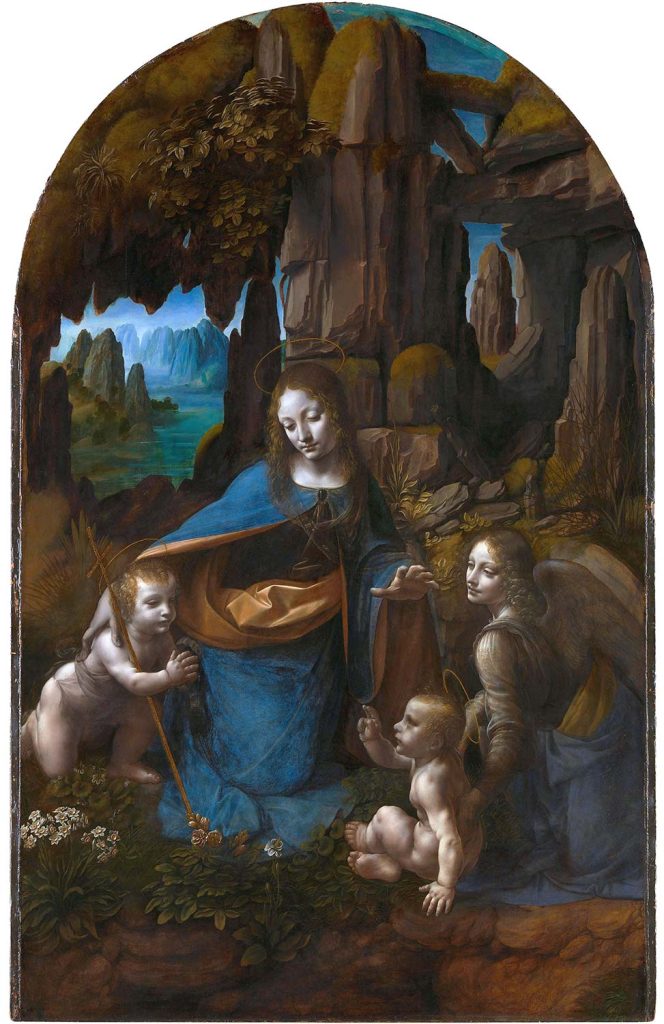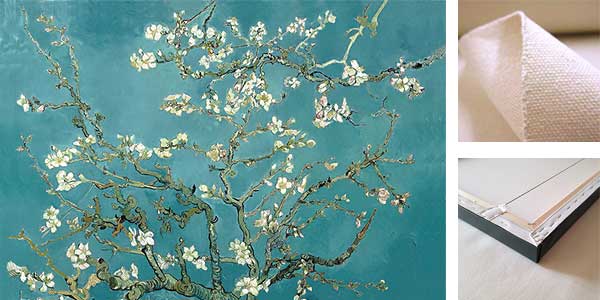
The Virgin of the Rocks by Leonardo da Vinci was created between 1495 – 1508. The painting is in National Gallery London. The size of the work is 189,5 x 120 cm and is made of oil on wood.
About the Work
This is one of Leonardo’s most mysterious and complex pictures. It’s a rare survival of one of his large-scale painted works, and a key example of many of the techniques and innovations with which he transformed Italian painting. Leonardo began his painting career in Florence, but in the early 1480s he offered his services to Milan’s ruling family, the Sforzas. While in Milan, he received the commission to paint ‘The Virgin of the Rocks’.
The painting was to be part of a grand altarpiece which included a large sculpture of the Virgin Mary, probably placed above it. The chapel that the altarpiece was destined for was in the church of San Francesco Grande, a Franciscan convent in Milan. The chapel belonged to the newly-formed confraternity of the Immaculate Conception of the Virgin Mary and it was dedicated to this feast.
The notion of the Immaculate Conception, which emerged in the twelfth century, was highly controversial but championed by the Franciscans. The idea was important because in order for Christ to be born without original sin (which passed from Adam and Eve for disobeying God), his mother, Mary, also had to be free of sin. The doctrine’s supporters argued that the Virgin had been conceived by God even before the creation of the world – and so before original sin. Read more in National Gallery London
About the Artist
Leonardo di ser Piero da Vinci (15 April 1452 – 2 May 1519) was an Italian polymath of the High Renaissance who was active as a painter, draughtsman, engineer, scientist, theorist, sculptor, and architect. While his fame initially rested on his achievements as a painter, he has also become known for his notebooks, in which he made drawings and notes on a variety of subjects, including anatomy, astronomy, botany, cartography, painting, and palaeontology. Leonardo is widely regarded to have been a genius who epitomised the Renaissance humanist ideal, and his collective works comprise a contribution to later generations of artists matched only by that of his younger contemporary Michelangelo.
Born out of wedlock to a successful notary and a lower-class woman in, or near, Vinci, he was educated in Florence by the Italian painter and sculptor Andrea del Verrocchio. He began his career in the city, but then spent much time in the service of Ludovico Sforza in Milan. Later, he worked in Florence and Milan again, as well as briefly in Rome, all while attracting a large following of imitators and students. Read more in Wikipedia
Order a reproduction of this work (printed on canvas)
